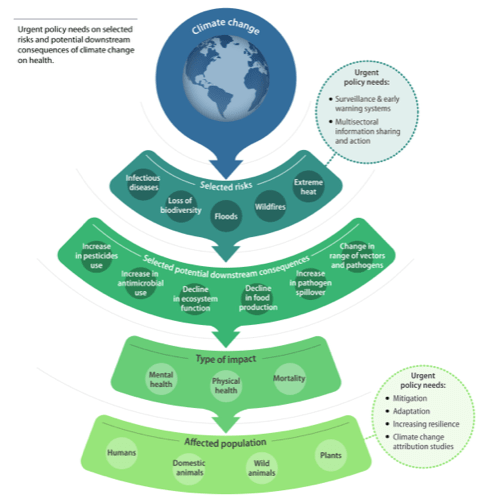At the COP 27 conference in Egypt, leading global experts have released a report, 10 New Insights in Climate Science, on the urgent need to invest in mitigation before climate change exceeds the limits of our capacity to adapt. The study was compiled by Futurearth, The Earth League, and the World Climate Research Programme. The report website https://10insightsclimate.science/ provides resources for policymakers and media including excellent graphics.
“In the scientific synthesis report, scientists from around the world emphasize and unpack the complex interactions between climate change and other drivers of risk, such as conflicts, pandemics, food crises and underlying development challenges. The scientists find that the potential to adapt to climate change is not limitless,” reported UN Climate Change News on Nov. 10.
“Rising sea levels capable of submerging coastal communities and extreme heat intolerable to the human body, are examples of ‘hard’ limits to our ability to adapt. They also highlight that over 3 billion people will inhabit ‘vulnerability hotspots’ – areas with the highest susceptibility to being adversely affected by climate-driven hazards – by 2050, double what it is today.
“Adaptation alone cannot keep up with the impacts of climate change, which are already worse than predicted,” said UN Climate Change Secretary Simon Stiell. “Adaptation actions are still crucial and are critical to upgrade small-scale, fragmented and reactive efforts. But the potential to adapt to climate change is not limitless. And they will not prevent all losses and damage that we’ve seen. I therefore applaud Parties for getting Loss and Damage onto the agenda for COP27 and I look forward to a thorough discussion on this issue.”
The UN’s news release continues: “The scientists further outline that persistent dependence on fossil fuels exacerbates major vulnerabilities, notably for energy and food security, and that deep and swift mitigation to tackle the drivers of climate change is immediately necessary to avert and minimize future loss and damage.”
“The less we mitigate, the more we have to adapt,” said Stiell. So, investing in mitigation is a way of reducing the need to invest in adaptation and resilience. That means tabling stronger national climate action plans — and doing so now.”
Thanks to ESRAG member Safa Ozfoy for sharing this important scientific summary. The graphic is one of several which visually summarize the report’s key insights.

